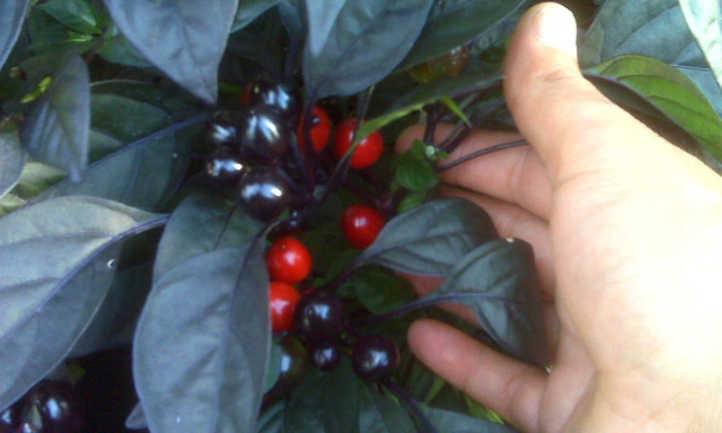Ornamental peppers are not only visually appealing, but they also add a kick to your meals. Although they may not have the best taste, they can definitely spice up any dish. Therefore, why not try planting ornamental pepper plants in your garden this coming spring?




Cultivating ornamental peppers is a hassle-free and satisfying experience as they require minimal attention once planted. Instead of worrying about high-maintenance plants in your vegetable patch, you can sit back and watch your ornamental peppers bloom with vibrant colors. These plants are a perfect addition to your garden, as their fruits not only add a pop of color but also heat to your dishes. However, if you’re not fond of consuming the fruits, you can use them as pest repellent sprays or for landscaping purposes.To get started, let’s discuss how to grow ornamental peppers and explore a few types that you can consider planting this spring. Additionally, check out some great products on Amazon to help you grow healthy and beautiful ornamental pepper plants.

The Numex Easter ornamental peppers are quite striking with their vibrant colors. These peppers come from the ornamental pepper plant, which has multiple varieties and common names. They are mostly found in southern North America, the Caribbean, and northern South America, and are considered tender perennials. The plant is dense and round with ovate dark purple to deep green leaves. It can grow anywhere from 6 inches to 3 feet tall and spread 8 to 24 inches wide. The plants bloom off-white flowers that require pollination, either by hand or bumblebees. The flowers bloom in late spring, and peppers form within 4 months if successfully pollinated. The peppers’ colors range from bright red, yellow, orange, green, or deep purple, resembling Christmas lights. Ornamental peppers are mostly grown for non-culinary reasons, but they work well in bean dishes, salsas, and hot sauces. However, be careful when eating them, as they pack more punch than flavor. Ornamental peppers were introduced to Europe in the 15th century and were prized for their showy colors. Today, they are known as Christmas plants and make an excellent addition to floral arrangements and ornate landscapes. They are also great container plants. Whether you want to eat them or not, ornamental peppers are sure to be a hit.

The Sangria ornamental peppers are a beautiful shade of red, and they are just one of many varieties that make for stunning additions to any garden. The Chilly Chili plant is another excellent choice, as it produces slender fruit in shades of red, orange, and yellow that pack the same level of spice as a poblano. The Prairie Fire pepper plant is great for hanging baskets or containers and boasts stout peppers in a range of colors, each with a spiciness on par with that of Thai peppers. Bolivian Rainbow peppers are particularly eye-catching, with slender leaves and peppers in shades of purple, red, orange, and yellow. Meanwhile, Black Pearl peppers get their name from their deep, almost black, purple color and cayenne-level heat. Medusa ornamental peppers are a small but stunning option that is perfect for children’s gardens, while Numex Easter peppers produce clusters of fruit in shades of white, yellow, purple, orange, and red. Whether grown indoors or out, in a container or in the ground, these ornamental peppers are sure to add some spice and color to any space.

The Bolivian Rainbow plant has a unique appearance resembling that of holiday lights. To grow ornamental peppers successfully, it’s essential to keep in mind a few basic principles. These plants require a minimum of 6-8 hours of direct sunlight daily, although they can tolerate partial shade. If you live in USDA zones 9-11, you can plant them outside, but in other areas, it’s best to grow them in containers that can be moved indoors during frosty weather to prevent them from dying.
Air Pots are an excellent option for growing ornamental peppers as well as trees and annual vegetables. In zones close to 9, 10, and 11, the plants may return the following spring with proper protection from winter conditions. They thrive in temperatures ranging between 70-80°F during the day and 55-65°F at night. High temperatures can slow down flowering and fruiting, while hot summers may even prevent them from producing entirely. Providing shade during hot summers and covering them with frost cloth during cold snaps can help protect them.
Watering is crucial when it comes to growing ornamental peppers. Water the plants every few days in the morning, making sure the top two inches of soil are moist but not waterlogged. During the fruiting stage, you may need to water them more often, potentially every day depending on the temperature. If you overwinter the plants in containers, water them every other week while they’re dormant. Using drip or sub-irrigation systems are ideal for their shallow root system.
The soil’s quality is also important for growing ornamental peppers. They require rich, loamy, and well-draining soil to yield a good harvest of flavorful peppers. Poor soil can support the plants’ life, but the yields will be minimal. Incorporating compost, manure, and agricultural sand into the soil can make it nutrient-rich and promote drainage. Basic potting mixes typically contain soil that’s suitable for growing ornamental peppers, and they prefer a pH level of 6.0 to 6.8.

For healthy peppers, use a slow-release fertilizer every two weeks until flowering with a 5-10-10 fertilizer. Once the fruit begins to form, add more fertilizer around the base of the plants, and repeat eight weeks later. No need to fertilize after that until the following spring for overwintered peppers. Prune ornamental peppers only to attain the desired shape or remove diseased or damaged leaves. Never trim flowering stems, but trim stems after they grow to 6-8 inches to promote a bushier appearance and healthier fruit. To propagate ornamental peppers, extract seeds from a healthy pepper and soak them in water for 4-7 days before planting them in well-draining soil. For cuttings, snip 5 inches of a healthy stem, remove 2-3 inches of leaves, dip it in rooting hormone, and plant it in starter pots. Keep the soil moist and place it on a heating mat under fluorescent bulbs until ready for transplanting. One plant per container is recommended due to their wide spread.

The Black Pearl ornamental peppers have a distinctive appearance, resembling berries more than peppers. Harvesting the hot peppers for food or hot pepper sprays is encouraged as they grow. These plants are generally easy-going, but some troubleshooting may be necessary. If planted in soil with little organic matter and poor drainage, flowers and fruit may not develop. To remedy this, add compost, manure, and sand around the base of the plant and apply fertilizer up to flowering. Green droopy leaves indicate underwatering, while yellow droopy leaves suggest overwatering or a nutrient deficiency. Aphids are pear-shaped insects that can cause defoliation and stress to the plant. Knock them off with a strong stream of water or use insecticidal soap or neem oil. Spider mites spin webs around the plant in late stages and can be eliminated by wiping the plant with isopropyl alcohol or using insecticidal soap. Thrips look like small grains of rice and can be eliminated with neem oil or insecticidal soap. Botrytis is a fungal disease that causes leaf spots, stem canker, and damping-off. Prune affected plant parts and apply botrytis-specific fungicides. Pythium root rot occurs when a water mold develops in the soil and prevents healthy root growth, so avoid overwatering and remove severely damaged plants.

Bolivian Rainbow peppers offer a delightful display of diverse hues.





